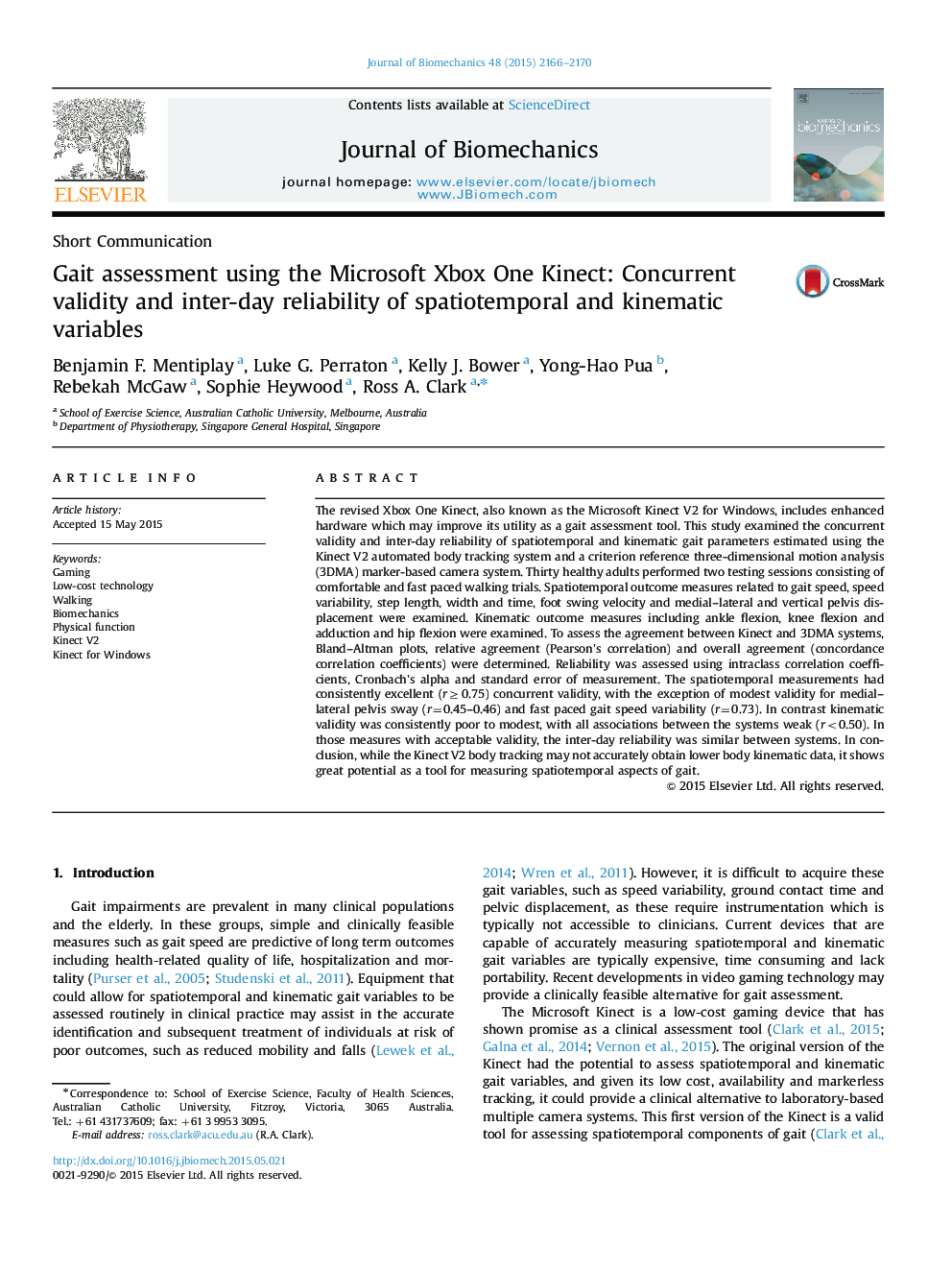| Article ID | Journal | Published Year | Pages | File Type |
|---|---|---|---|---|
| 10431438 | Journal of Biomechanics | 2015 | 5 Pages |
Abstract
The revised Xbox One Kinect, also known as the Microsoft Kinect V2 for Windows, includes enhanced hardware which may improve its utility as a gait assessment tool. This study examined the concurrent validity and inter-day reliability of spatiotemporal and kinematic gait parameters estimated using the Kinect V2 automated body tracking system and a criterion reference three-dimensional motion analysis (3DMA) marker-based camera system. Thirty healthy adults performed two testing sessions consisting of comfortable and fast paced walking trials. Spatiotemporal outcome measures related to gait speed, speed variability, step length, width and time, foot swing velocity and medial-lateral and vertical pelvis displacement were examined. Kinematic outcome measures including ankle flexion, knee flexion and adduction and hip flexion were examined. To assess the agreement between Kinect and 3DMA systems, Bland-Altman plots, relative agreement (Pearson's correlation) and overall agreement (concordance correlation coefficients) were determined. Reliability was assessed using intraclass correlation coefficients, Cronbach's alpha and standard error of measurement. The spatiotemporal measurements had consistently excellent (râ¥0.75) concurrent validity, with the exception of modest validity for medial-lateral pelvis sway (r=0.45-0.46) and fast paced gait speed variability (r=0.73). In contrast kinematic validity was consistently poor to modest, with all associations between the systems weak (r<0.50). In those measures with acceptable validity, the inter-day reliability was similar between systems. In conclusion, while the Kinect V2 body tracking may not accurately obtain lower body kinematic data, it shows great potential as a tool for measuring spatiotemporal aspects of gait.
Related Topics
Physical Sciences and Engineering
Engineering
Biomedical Engineering
Authors
Benjamin F. Mentiplay, Luke G. Perraton, Kelly J. Bower, Yong-Hao Pua, Rebekah McGaw, Sophie Heywood, Ross A. Clark,
